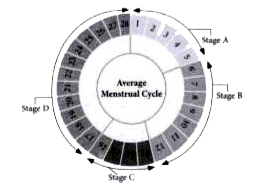Which of the following event occurs during the repolarization phase of an action potential in the neuronal membrane ?
K+ inos rapidly move outside the cell
Na+ ions rapidly move inside the cell
N+ inos rapidly move outside the cell
K+ ions rapidly move inside the cell
The correct Answer is:B
To answer the question regarding the event that occurs during the repolarization phase of an action potential in the neuronal membrane, we can break down the process step by step:
1. Understanding the Resting State:
- In the resting state of a neuron, the membrane is polarized. This means that the inside of the neuron is negatively charged compared to the outside. The membrane is permeable to potassium ions (K+) and nearly impermeable to sodium ions (Na+).
2. Initiation of Action Potential:
- When a stimulus is applied to the neuron, it causes depolarization. This occurs when sodium channels open, allowing Na+ ions to rush into the cell, making the inside of the neuron more positive.
3. Transition to Repolarization:
- After the peak of the action potential, the sodium channels close, and potassium channels open. This transition marks the beginning of the repolarization phase.
4. Potassium Ion Movement:
- During the repolarization phase, potassium ions (K+) move out of the neuron. This movement occurs because the permeability of the membrane to K+ increases significantly. As K+ leaves the cell, the inside of the neuron becomes more negative again, restoring the negative charge.
5. Restoration of Resting Potential:
- The movement of K+ out of the cell continues until the membrane potential returns to its resting state, completing the repolarization process.
Conclusion:
The correct event that occurs during the repolarization phase of an action potential in the neuronal membrane is that potassium ions (K+) move rapidly outside the cell.
- In the resting state of a neuron, the membrane is polarized. This means that the inside of the neuron is negatively charged compared to the outside. The membrane is permeable to potassium ions (K+) and nearly impermeable to sodium ions (Na+).
- When a stimulus is applied to the neuron, it causes depolarization. This occurs when sodium channels open, allowing Na+ ions to rush into the cell, making the inside of the neuron more positive.
- After the peak of the action potential, the sodium channels close, and potassium channels open. This transition marks the beginning of the repolarization phase.
- During the repolarization phase, potassium ions (K+) move out of the neuron. This movement occurs because the permeability of the membrane to K+ increases significantly. As K+ leaves the cell, the inside of the neuron becomes more negative again, restoring the negative charge.
- The movement of K+ out of the cell continues until the membrane potential returns to its resting state, completing the repolarization process.
The correct event that occurs during the repolarization phase of an action potential in the neuronal membrane is that potassium ions (K+) move rapidly outside the cell.
Topper's Solved these Questions
Similar Questions
Knowledge Check

Which of the following events occur during stage D?ABlood vessels of uterus lining break downBWall of uterus becomes thicker by cell divisionCFertilised ovum gets implanted.DRelease of mature ovumWhich of the following events occurred last?
AChauri-Chaura incidentBDandi MarchCGandhi-Irwin PactDDeclaration of Communal AwardWhich of the following events occurred first?
ALord Lytton's Delhi DarbarBSanthal RevoltCFirst Anglo-Sikh WarDIlbert Bill Controversy
Which of the following ion moves first during the generation of an action potential along the axon?
View SolutionWhich of the following events occurs within the uterine tubes?
View SolutionWhich of the following events occur at a faster rate ?
View SolutionWhich of the following events did NOT occur in 1919 ?
View SolutionWhich of the following events did NOT occur in 1919?
View Solution
